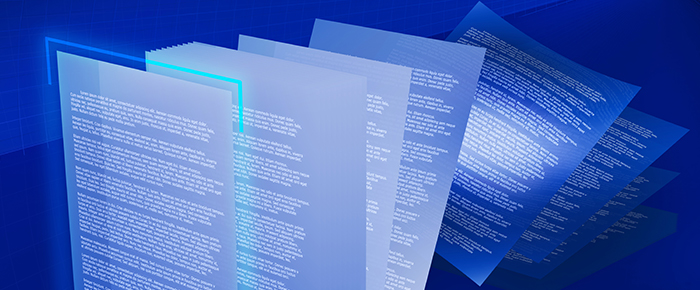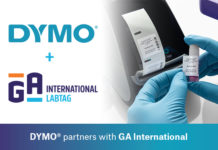 Research labs generate vast amounts of digital data that needs to be recorded, analyzed, and shared. Handling this amount of data manually and in a paper-based environment is becoming exceedingly difficult. Turning to digitization and automation makes research more efficient and reproducible, saving scientists both time and money.
Research labs generate vast amounts of digital data that needs to be recorded, analyzed, and shared. Handling this amount of data manually and in a paper-based environment is becoming exceedingly difficult. Turning to digitization and automation makes research more efficient and reproducible, saving scientists both time and money.
Digitization of the Lab
The digitization of the lab involves turning paper-based/analog information into a digital format. In practice, this requires the implementation of Electronic Lab Notebooks (ELNs) and Laboratory Information Management Systems (LIMS). These programs greatly simplify record-keeping while also making laboratory device integration possible. This eliminates the need for manual data processing and allows for the automation of workflows and devices that automate barcoding, sample analysis, and retrieve results.
Accurate documentation is also critical to producing efficient research and necessitates that a detailed protocol is followed closely, with every step of an experiment recorded accurately. ELNs and sample management software let you plan and document complex experiments, in addition to helping organize and track the location of valuable samples in freezers and liquid nitrogen tanks. This not only improves the quality and reproducibility of experiments, thus minimizing human error, but it also makes searching and queries quick and easy.
Cloud Storage & Computing
Increases in the production of digital data dictate the establishment of reliable and secure data storage systems. Traditionally, data storage involved tons of C.D.s, DVDs, and USB drives scattered across the lab, making data retrieval difficult, time-consuming, and loss-prone. Today, with local servers and the introduction of cloud storage, scientists can upload their data, perform remote analysis, and store it for later retrieval.
Cloud-based technologies offer substantial benefits over local servers, allowing organizations and individual researchers to store and access information and share it with colleagues around the globe. Significant improvements in computational power have led to a higher demand for cloud computing, with small-scale labs now able to securely store their data remotely without creating their own data storage facility.
Improved security protocols have also boosted the scientific community’s trust in data sharing, allowing laboratories to distribute information safely between international colleagues and investors. Seeing results in real-time and sharing expertise has allowed scientists to collaborate on projects on a global real-time scale that hasn’t been available before. This has allowed researchers to combine and compare datasets and share them between labs while also creating a full audit trail for intellectual property protection (I.P.) or regulatory compliance. Furthermore, advancements in cloud computing will allow for the analysis of results to be performed in the cloud, dropping the capital investment needs of labs by sharing resources.
Implementation Strategies
Once a lab has decided to go digital, there are two paths they can follow, each of which involves either a gradual implementation or a thorough evaluation followed by full adoption. Both methods have their advantages and drawbacks, with no one size fits all approach for every lab.
The gradual approach starts with implementing an inventory management system to help organize samples, reagents, and lab freezers. This can be set up rather quickly and easily, with little upfront cost, making it perfect for small labs. This type of approach also allows the lab to evaluate the software provider before eventually upgrading to a more complete system that includes an ELN to help manage notebooks and standard operating procedures (SOPs).
The second approach is likely better suited for larger commercial labs. This approach involves directly implementing an ELN to handle sample and data management and should include robust security protocols. ELNs offer various features, such as tracking and recording for full audit trails, allowing users to sign & witness content according to regulations, and eliminating the problem of poor handwriting. Ultimately, the process of choosing an ELN must be carefully and thoroughly deliberated as replacing an ELN can be an expensive process. If well implemented, a single ELN installed across an organization reduces training, support, and hosting costs, can be scaled with the company’s growth, and offers the option to allocate expenses across multiple labs.
Automation & A.I.
Automated systems have increasingly been implemented to improve lab performance. They facilitate workflow and allow scientists to focus more on challenging bench work. These automated processes have, in turn, led to the generation of large amounts of data, with little input required from researchers.
To bridge the gap between lab automation and digitization, a fully integrated laboratory management system is needed. These systems can be integrated with SOPs stored in ELNs, which can be executed and run remotely, allowing for precise control over variables and enforcing research integrity. They should also let users automatically store data generated by automated devices on lab servers or the cloud.
Greater collaboration between labs and increased data output has made data analysis more challenging, with bigger data sets and combined data from different sources. Artificial intelligence (A.I.) and machine learning have begun to solve these issues while also helping configure equipment better, including automated lab instruments, and improving data integration. Through its ability to continually learn, A.I. systems may even eventually be able to extract relevant research data from public databases, such as PubMed.
Conclusion
Researchers are turning to automation more with every passing year. This has allowed them to increase their output and efficiency but also requires better documentation that can be tracked digitally and across collaborators. As such, labs large and small need to start keeping digital records, best accomplished with an ELN. This will help reduce human error in your lab and make your research more reproducible.
LabTAG by GA International is a leading manufacturer of high-performance specialty labels and a supplier of identification solutions used in research and medical labs as well as healthcare institutions.



